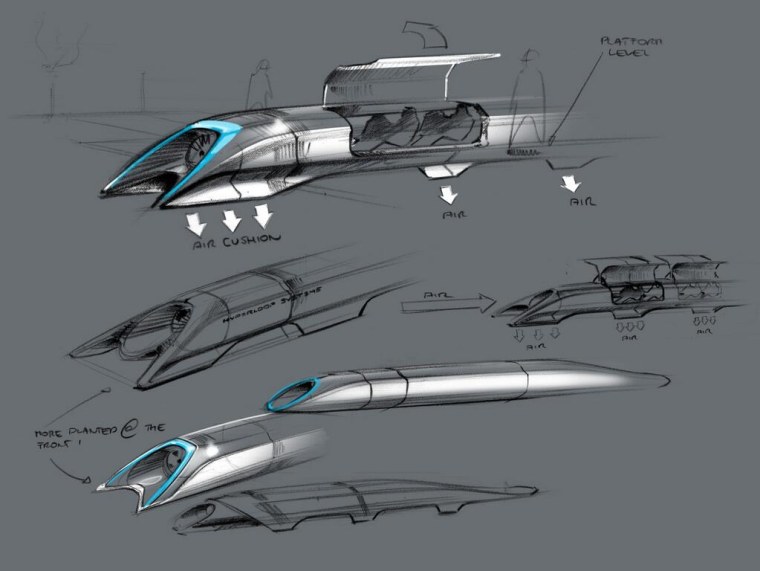
SpaceX and Tesla founder Elon Musk's plan to shunt humans through a pneumatic tube at speeds of 700+ miles per hour via a "Hyperloop" may boggle the mind. But new simulations confirm that the system won't defy the laws of physics.
According to Musk's latest reveal, this alternative to the California high-speed-rail would involve specialized commuter pods that would hold up to 28 passengers, revved up by electromagnetic linear accelerators, sent screaming through low-pressure steel tubes on cushions of air.
Ansys, a company that builds software simulations for the transportation industry, created a model based on details Musk proposed in a 57-page public document. When they put the virtual Hyperloop through a dry run, the engineers were impressed.
"I'm convinced that the Hyperloop is going to work," Sandeep Sovani, director of land transport strategy at Ansys, told NBC News. "I don't immediately see any major issues or red flags." (Although the firm has worked with Musk on a previous SpaceX project, it is not currently carrying out this Hyperloop evaluation in any official capacity.)
Sovani's team created a virtual pod and tube according to dimensions and artist renderings in Musk's document describing the high-speed system. The virtual tube was depressurized, and the pod subjected to air flow tests, as cars are in a wind tunnel, with air speeds hitting 470 miles per hour.
Sovani does expect some modifications will be necessary, however. For one thing, the shape of the capsules need to be further streamlined — the boxy artist renderings will have to be smoothened out to mimic the shape ultra-fast projectiles like a bullet or rocket. "The shape of the entire vehicle will have to be cylindrical," he said. The team wants to get the shape and aerodynamics of the individual crafts right, before moving on to other possible snags in the setup, as it's been described so far.
Other issues that have yet to be addressed: the high-speed pods are likely to get really hot. And, there is nothing at present which will prevent the cars from rolling — turning upside down in the tube. Let's face it, you're not going to want to ride upside down from San Francisco to Los Angeles, no matter how quick the ride.
To Sovani, these are routine challenges that can and will be ironed out — it's just a matter of targeting them one by one, he said.
But while the Ansys analysis is encouraging for Hyperloop hopefuls, concerns that many other experts have voiced have to do with economics rather than physics and engineering. Even if the Hyperloop can be built, the cost to do so might stop it in its tracks.
Nidhi Subbaraman writes about technology and science. You can follow her on Facebook, Twitter and Google+.